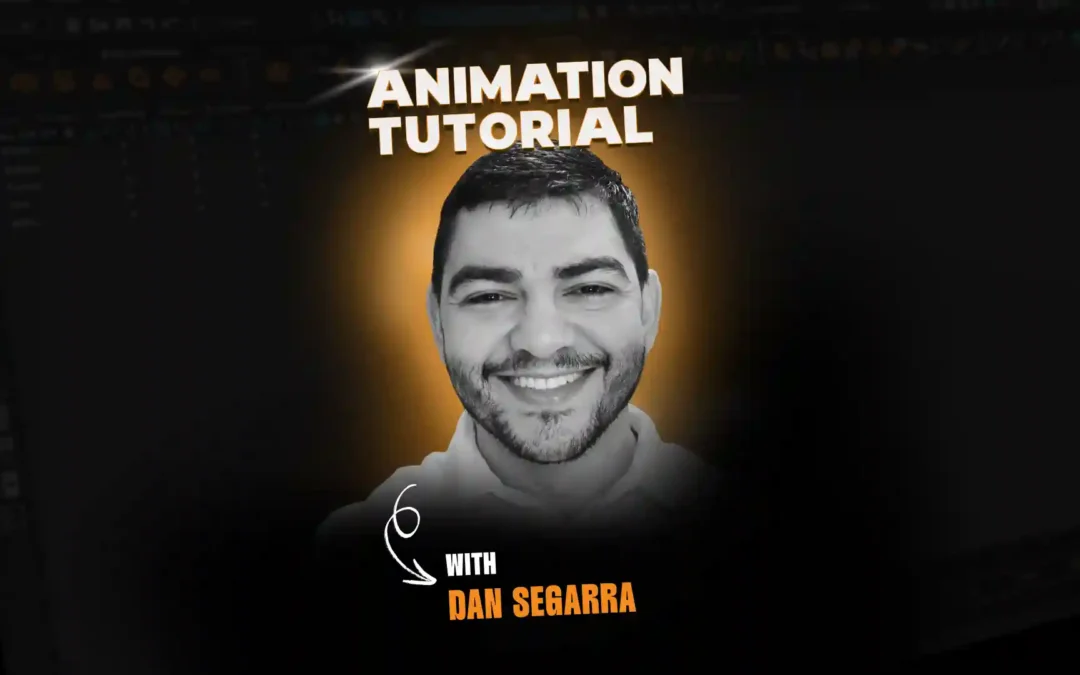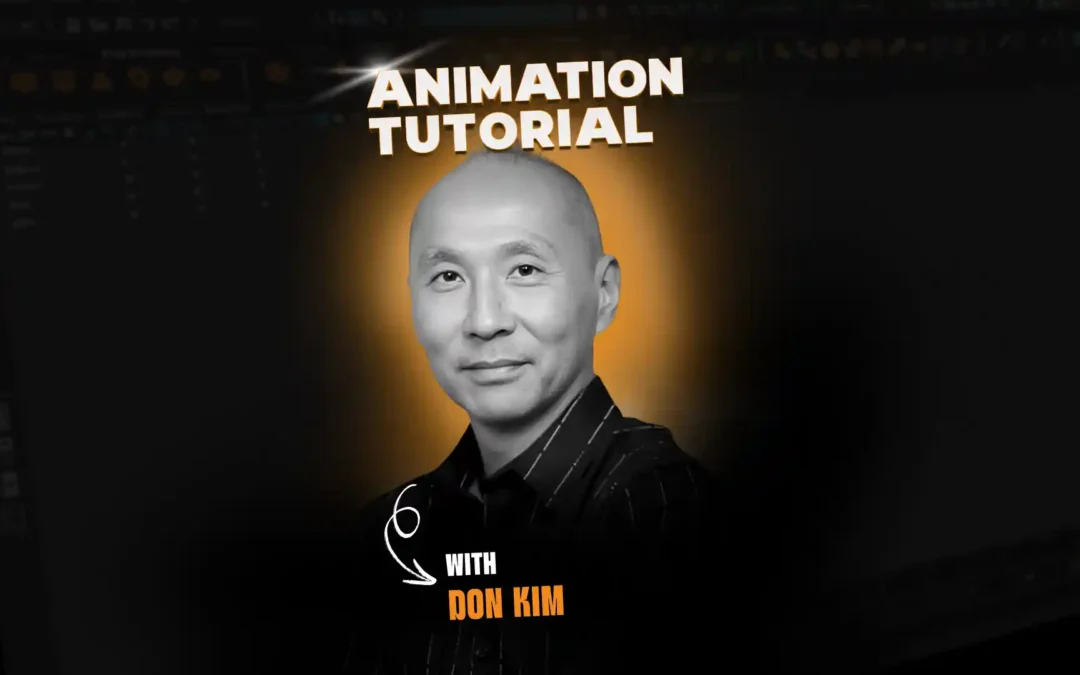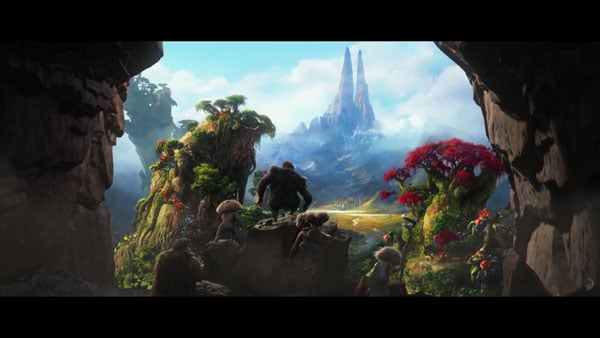
SPOILER ALERT. SPOILER ALERT. SPOILER ALERT. We love for you to read about Animation Mentor alumni — starting with Thomas Grummt — who just completed work on The Croods. But fair warning, Thomas does spoil the movie. Look away if you have to; but read it because you must. And please join us in a big Animation Mentor woot to Thomas — awesome work.
— The Animation Mentor Crew
For a couple of months now, I’ve been busy animating dragons and vikings. However, I still think about The Croods a lot. It was my second movie at DreamWorks, and an altogether fantastic experience. It’s been exciting to see the movie perform well since its release — but the best thing for me is the feedback and reactions from audiences, who are just having a great time seeing the film, and who can relate to the characters and the themes of the story. Seeing people laugh or cry over a shot I created is what makes me want to be an animator.
Just as the characters set out on their journey in the movie, it was a journey into new areas of animation for me. While it is hard to say what you are actually learning when working on a project, when I look back it was one big learning experience — ranging from improving my workflow and animation skills, communicating with supervisors and directors, (and gaining) a better understanding of acting and filmmaking.
Production
I worked on the movie for 18 months and was lucky enough to start at a fairly early stage of animation production. The story was still changing and many of the characters were just starting to take shape through animation tests and experimenting with their personalities. Right away, I fell in love with the concept of the weird creatures, who were a mix of animals we know today. I worked on a few tests before starting my first shots — for example, a punch monkey walk and a wing flap for the flying turtle. Most supervisors had been on the project for (some time) and there were acting tests and walk/run-cycles for most of the main characters. Moreover, the sequence where Eep first meets Guy was already far along in animation and it was animated by just their supervisors, Line Andersen and Jakob Jensen. I remember being super impressed by the unusual mix of animal behavior and human acting, and thinking: “This won’t be easy to live up to.”
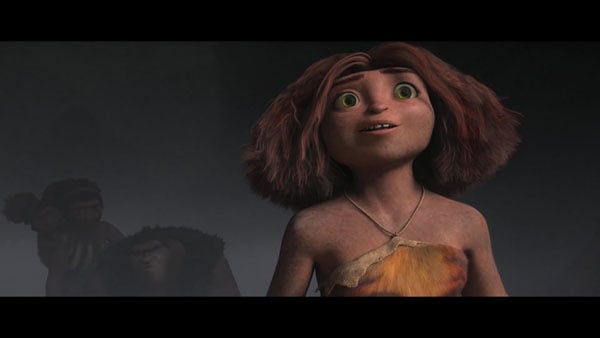
I liked having a longer production schedule, because we were able to animate the movie with a very small crew (which I liked a lot). Led by head of character animation James Baxter and 5 supervising animators, the team size ranged from just a handful of animators to about 36 in the end. For the majority of the production, we were just above 20. It was very exciting to see a movie taking shape and finding itself over the course of production. On Kung Fu Panda 2 and Puss in Boots, I only got a glimpse of that process in the few months that I worked on those shows.
Just to give an example, the character of Belt the Sloth was quite different when I joined The Croods. He used to be more like an actual sloth and had a much smaller role in the story. Gradually, he became the fun sidekick with more of his own jokes and moments. I believe part of that was due to how much audiences loved him in test screenings. In the end, he carried a lot of the marketing for the movie and kids were running around crying “Dun dun duuuuh.” He is now one of my favorite toys in the office!
Cavemen acting
One aspect I really liked about the show was that I got to work on a variety of characters, since we did not have “character teams.” We usually animate everything in the shot, unless it’s something like a flock of birds, which was handled by the crowds department.
The Croods family members were almost always together, which resulted in a high-character density for many shots. All of them had a specific way of moving and characteristic behavior. Grug, the overprotective father, was similar to a silverback gorilla. Eep, the rebellious teenage daughter, moved more like an athletic cat. The 9-year-old Thunk resembled a clumsy chimpanzee and the youngest daughter Sandy acted more like a dog. It was both fascinating and challenging to find the balance between the animal-like and instinctual behavior, and relatable, human-like acting choices. We always looked for opportunities to show that the characters made use of their arms and legs for locomotion, and could transition between biped and quadruped mode with ease. For that, the rigs offered many IK controls on the feet as well as the hands, to achieve compression and natural roll and push-off motions.
Much of the charm and life of the movie existed in the relations between the family members, and I think that is part of what grabbed audiences (that, and the furry animals). The Croods have family issues like we do today, but they live in a prehistoric, hostile world. They needed to be believable as a family, and I was lucky enough to work on some shots where I could show and explore those relations.
For example, in one of my earliest shots, Eep and Grug come back to the canyon after Eep had run away, and her Mum checks her “animal-style” — sniffing and poking her hair, while Grug goes into a sulky gorilla pose. Eep, on the other hand, behaves more like an annoyed teenager, who has to undergo a parental ritual while thinking about the new Guy she just met.
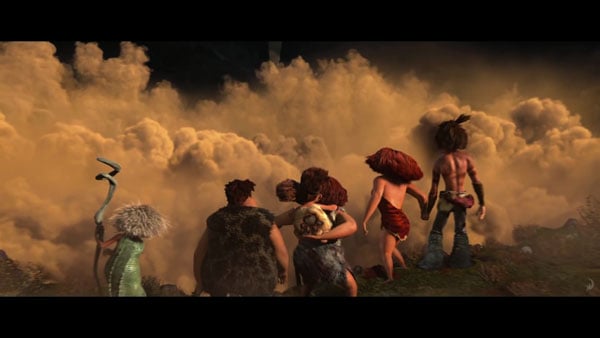
Another scene was a transition from utter despair to curiosity and hope, when Eep and the family discover the view of the new world after their cave was destroyed. It was a challenging shot because it’s the longest one I’ve ever animated (900 frames), and it also has the whole family walking and climbing across uneven terrain, ending in the iconic pose of the family silhouette against the jungle valley. For most characters, I shot reference of myself and I used a nice take from Eep’s supervisor Line Andersen. To explore the moment when Eep is hit by the sunlight through the dust, I had my wife shine a flashlight into my eyes. After the animation was finished, the rays were added in lighting.
A big part of the positive experience on the show was working with the directors Chris Sanders and Kirk De Micco. They were very collaborative and always open for ideas. They also did not micromanage the animation or the acting, and James Baxter did a great job interpreting their vision and translating it into animation terms. I never felt like I was just executing somebody else’s movie, but that I was actually involved in shaping it.
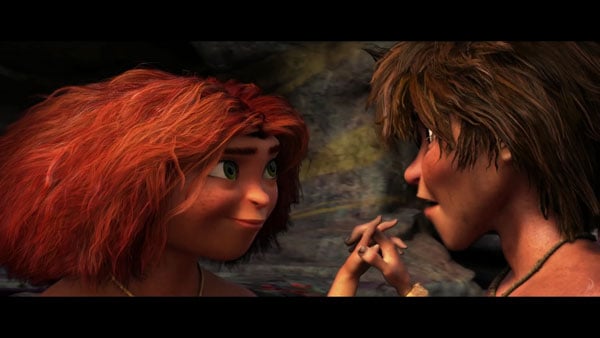
To give an example, there is a scene where Eep and Guy raise their hands to the sun, hold hands, and almost kiss. It’s an important and delicate moment for them, as they discover a growing fondness for each other. I shot reference with my wife, and that’s pretty much exactly what is in the movie. It made it a very personal scene, and hopefully a sincere one.
There were many more shots like this, and while most of them combined ideas and feedback from the directors, James Baxter, and the supervisors, there was always room to put a little something of myself in there. This created an extra bit of motivation and also a sense of ownership.
Another favorite of mine is the shot when Guy tells a joke, and Gran is cracking up while the others don’t get it. This involved shooting reference together with three supervisors in order to get the interaction right. I played the grandmother which was a lot of fun!
Creature
Like I mentioned earlier, the film confirmed my suspicion that animating creatures is very appealing to me. Studying how a bear gets up on its hind legs, studying how a tiger rotates its paws in a walk, or learning about typical ape hand poses was very exciting.
My first shot on the show was a hungry bear owl circling in front of the Croods’ cave at night. Except for a few horse tests I did in class 6 of the Character Animation Program (Polishing & Portfolio), I had never animated a quadruped walking before, so I was a bit nervous. Having reference always takes some of the fear away for me, so I used videos of tigers walking in circles in zoos, compared it to bears doing the same thing, and looked at bears pushing against cars and trying to get to the food inside. I used bits and pieces of each reference, something that’s often called “frankenstein-ing.” On top of that, it’s crucial to use your creative judgment to adapt the poses and movement to the proportions and specific behavior of the creature.
For The Croods, it was important to ground the creatures in reality, but then make them special and unusual, because they are often a weird mix of very different species, like a piranha bird, a walking whale, or a mousephant.
Another animal I loved animating was Chunky the tiger — or macawnivore, as he was officially called. James Baxter had animated a run-cycle for him that we were planning to use in the sequence where Grug is trying to get back to his family. However, all of my shots had him running over very uneven terrain, uphill and downhill and jumping sideways, so I ended up animating most of them from scratch, while always using the run-cycle as my guideline. It was a learning process to realize how much you can push the change of shapes, and squash and stretch, in the legs and body in order to achieve a dynamic result. Also, I found it crucial to use the IK hips, chest, and head to get good weight and overlap between the body masses.
After the movie was released, I was super happy that the creatures seemed to be very appealing and fun for audiences, especially kids.
I feel very lucky to have been a part of this journey and the incredible team that brought The Croods to life. I am thankful for the support, help, and trust I was given — and I can’t wait to see what will happen in Croods 2!
About Thomas: Thomas Grummt is an Animation Mentor graduate from Summer 2010 and currently animates at DreamWorks Animation in Glendale, California.
All images belong to DreamWorks Animation.
